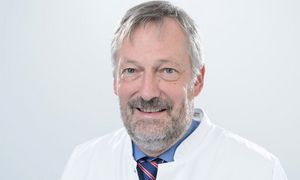
Non-invasive imaging of myeloid cell infiltration (C3)
Rationale and aims
Myeloid cell recruitment is a hallmark of inflammation in various myocardial diseases, including myocardial infarction (MI). Therefore, in our project, we will use the pig as a disease model to establish non-invasive imaging of myeloid cell infiltration, primarily of monocytes. This approach has been successfully implemented in rats in the past, as shown in figure 1. The resulting temporally and spatially resolved study of the respective immune response enables a precise understanding of possible therapeutic approaches.

Method
Non-invasive imaging is achieved by ultra-high field (UHF) magnetic resonance imaging (MRI) of a 19F-labeled nanoemulsion after being ingested by myeloid cells. The combination of high resolution cardiac 1H and 19F MRI enables direct monitoring of myocardial tissue and function and the respective immune response.
Since this technique is novel in ultra-high field MRI, this project focuses mainly on the establishment of experimental methodologies including 19F tracer synthesis, UHF MR hardware and software development, as well as the application in the animal.

Tracing the mode of action of colchicine
Finally, a therapeutic study using the established techniques will test our hypothesis that colchicine treatment reduces early leukocyte infiltration and pro-inflammatory gene expression in the myocardium. Colchicine has shown to reduce ischemic injury, attenuated cardiac remodeling, and improved survival, however, its beneficial effects and kinetics have not been further investigated in a translational model.PerspectiveProspectively, we will use this unique research platform to guide and monitor manifold translational immuno-therapeutic treatment approaches. Our disease model, including the imaging techniques, will be made available to all consortium members in the future.
Contact
Prof. Dr. rer. nat. et med. habil.
Laura Schreiber MBA
Leader of the CRC project C3
+49 931 201-46365
Anschrift
Medizinische Klinik und Poliklinik I, Universitätsklinikum Würzburg, Zentrum für Innere Medizin (ZIM), Oberdürrbacher Straße 6, Haus A3, 97080 Würzburg, Deutschland
Deutsches Zentrum für Herzinsuffizienz Würzburg | Comprehensive Heart Failure Center | Am Schwarzenberg 15 | Haus A15 | 97078 Würzburg




